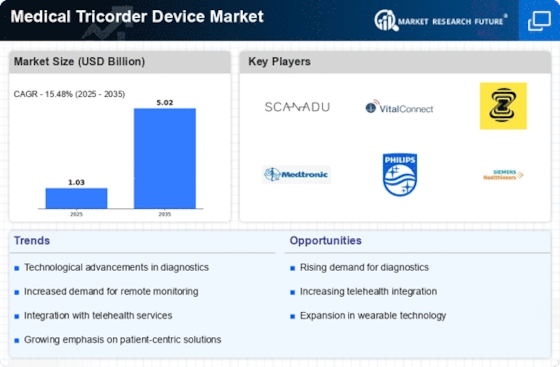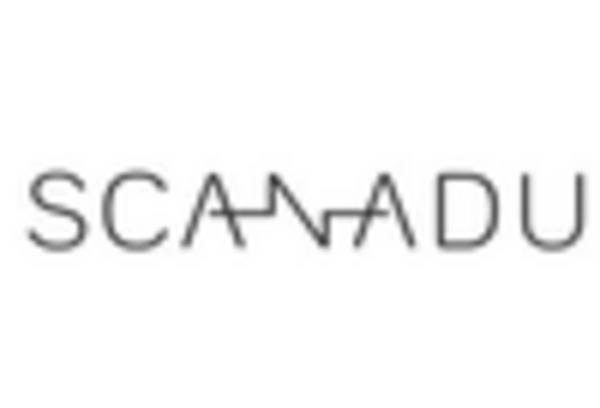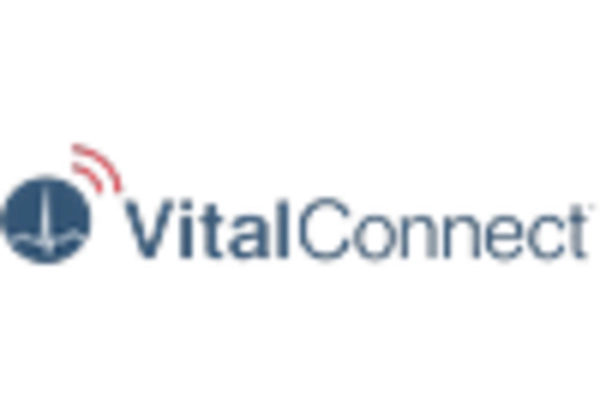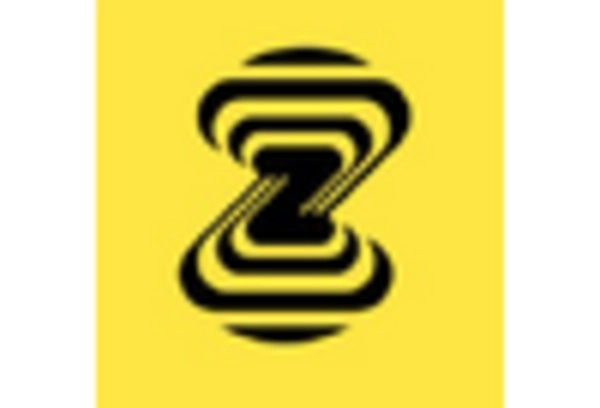Shift Towards Personalized Medicine
The shift towards personalized medicine is reshaping the Medical Tricorder Device Market. As healthcare moves away from a one-size-fits-all approach, there is a growing emphasis on tailoring treatments to individual patient needs. Medical tricorders, with their capacity to collect and analyze patient-specific data, play a pivotal role in this transformation. By enabling healthcare providers to make informed decisions based on real-time health information, these devices facilitate more effective and personalized treatment plans. The personalized medicine market is projected to reach USD 2 trillion by 2030, indicating a substantial opportunity for the Medical Tricorder Device Market to align with this trend and enhance patient care through customized health solutions.
Increasing Prevalence of Chronic Diseases
The rising prevalence of chronic diseases is a critical driver for the Medical Tricorder Device Market. Conditions such as diabetes, cardiovascular diseases, and respiratory disorders are becoming more common, necessitating innovative solutions for monitoring and management. The World Health Organization has reported that chronic diseases account for approximately 71% of all deaths globally, underscoring the urgent need for effective management tools. Medical tricorders, with their ability to provide real-time health data, are well-positioned to address this challenge. As healthcare systems adapt to the growing burden of chronic diseases, the Medical Tricorder Device Market is likely to see increased investment and development, aimed at improving patient outcomes and reducing healthcare costs.
Rising Demand for Remote Patient Monitoring
The Medical Tricorder Device Market is experiencing a notable increase in demand for remote patient monitoring solutions. This trend is driven by the growing need for efficient healthcare delivery, particularly in home care settings. As healthcare systems seek to reduce costs and improve patient outcomes, the adoption of devices that enable continuous monitoring of vital signs and health parameters becomes essential. According to recent estimates, the remote patient monitoring market is projected to reach USD 2.5 billion by 2026, indicating a robust growth trajectory. This surge in demand is likely to propel the Medical Tricorder Device Market, as these devices offer the capability to monitor patients in real-time, thereby enhancing the quality of care and facilitating timely interventions.
Technological Advancements in Diagnostic Tools
Technological advancements are significantly influencing the Medical Tricorder Device Market. Innovations in sensor technology, data analytics, and miniaturization of devices are enabling the development of more sophisticated and accurate diagnostic tools. These advancements allow for the integration of multiple diagnostic functions into a single device, which is a hallmark of tricorder technology. The market for diagnostic devices is expected to grow at a compound annual growth rate of 7.5% through 2027, reflecting the increasing reliance on advanced diagnostic capabilities. As healthcare providers seek to enhance diagnostic accuracy and efficiency, the Medical Tricorder Device Market stands to benefit from these technological improvements, potentially leading to broader adoption across various healthcare settings.
Regulatory Support for Innovative Medical Devices
Regulatory support for innovative medical devices is a significant factor driving the Medical Tricorder Device Market. Governments and regulatory bodies are increasingly recognizing the importance of fostering innovation in healthcare technology. Initiatives aimed at expediting the approval process for novel medical devices are being implemented, which encourages investment and development in the sector. For instance, the FDA has introduced programs to streamline the review of breakthrough devices, which could include tricorder technology. This supportive regulatory environment is likely to enhance the growth prospects of the Medical Tricorder Device Market, as it facilitates quicker access to market for innovative solutions that can improve patient care and health outcomes.


















Leave a Comment